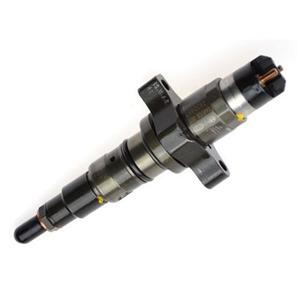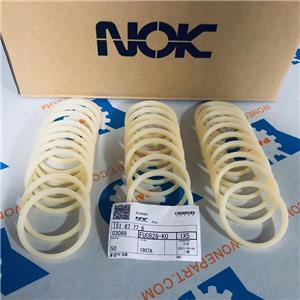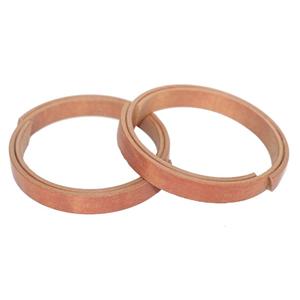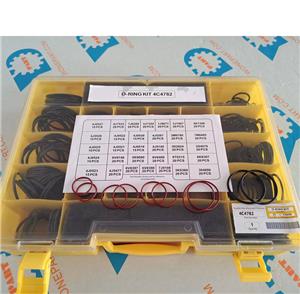Why Wonepart seal there are different types of Seal application in different area?
Why Wonepart seal there are different types of Seal application in different area?
Leakage is one of the common failures of mechanical equipment. There are two main reasons for leakage: one is the result of mechanical processing, the surface of mechanical products must have various defects and shape and size deviations, therefore, gaps will inevitably occur at the joints of mechanical parts; the other is sealing two If there is a pressure difference on the side, the working medium will leak through the gap.
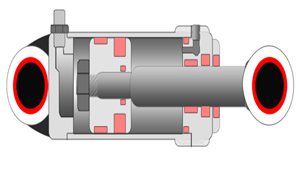
Reducing or eliminating gaps is the main way to prevent leakage. The role of the seal is to seal the gap between the joint surfaces, isolate or cut off the leakage channel, increase the resistance in the leakage channel, or add a small working element in the channel, which will cause pressure on the leakage and partially offset the pressure difference that caused the leakage. Or fully balanced to prevent leakage.
Sealing can be divided into two categories: static sealing between relatively static joint surfaces and dynamic sealing between relatively moving joint surfaces.
Static seal usually refers to the seal between two static surfaces. There are three main categories of static sealing: gasket sealing, sealant sealing and direct contact sealing.
Dynamic seal refers to the seal between relative moving parts in a machine (or equipment).
1 Packing seal Packing seals are mainly used for the dynamic sealing of the moving parts of process machines and equipment in the machinery industry, such as centrifugal pumps, compressors, vacuum pumps, mixers, reactor shaft seals and reciprocating pumps, plungers or piston rods of reciprocating compressors, And to make the seal between the valve stem of the linear and spiral motion valve and the fixed body. The basic form of stuffing box is:
(1) Asbestos packing:
Both temperature resistance and corrosion resistance are very good, but when used alone, the sealing effect is not good, so it is always impregnated or added with other materials. Oil-impregnated asbestos packing: There are two basic structural forms, one is twisted and the other is braided. It can be divided into round and square.
(2) Teflon braided packing:
The PTFE tape is braided into packing, which has excellent corrosion resistance and can be used in cryogenic media.
(3) Rubber O-ring:
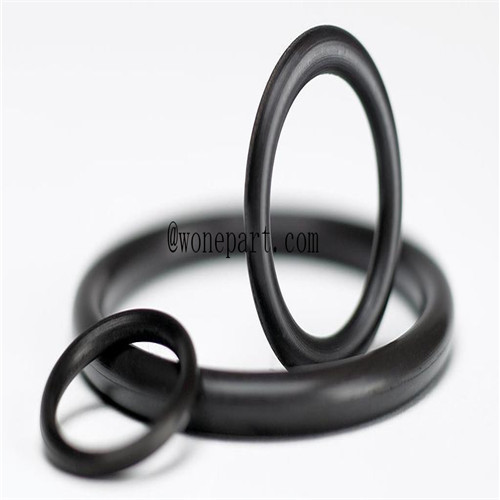
In the low pressure state, the sealing effect is good. The use temperature is restricted, such as natural rubber can only be used at 60°C. For O ring you could find details on our web http://www.wonepart.com/product/o-ring, you could find the part that you want.
(4) Plastic molding filler:
Generally made into three-piece type, but also can be made into other shapes. The plastics used are mostly polytetrafluoroethylene, and nylon 66 and nylon 1010 are also used.
(5) Soft packing seal
Soft fillers, also known as mud-like fillers, are advanced "packings" made from a new generation of high-performance synthetic fibers with special barrier agents and lubricants. The soft packing has any size and shape, and it is easy to install. It can be injected directly through a special high-pressure gun. It does not need to be pre-cut like a traditional packing, and it can be applied to any size of the packing cavity.
The soft packing seal has a wide range of applications, such as the sealing of high-pressure reciprocating pumps or low-speed pumps, high-temperature valve stems, valves or stuffing boxes.
It has the advantages of simple structure, reliable operation and low price, and is still widely used in occasions where the requirements are not too high.
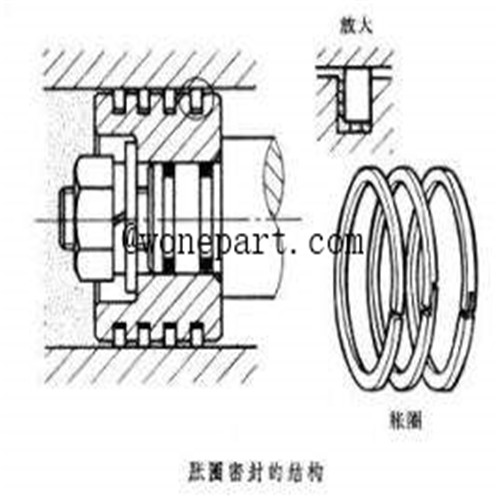
The expansion ring is a notched metal elastic ring, commonly known as a piston ring. When the expansion ring is in a free state, the incision is opened, and the incision is closed after being installed in the cylinder, and the outer circle of the expansion ring is tightly attached to the inner surface of the cylinder by elastic force. When working, the expansion ring is pressed against one side of the expansion ring groove by the pressure of the working medium, and the outer cylindrical surface of the expansion ring and the close end surface jointly play a sealing role. The expansion ring is usually made of cast iron or tin bronze, and is mainly used for piston seals of reciprocating compressors and internal combustion engines with higher operating temperatures, and shaft seals of steam turbines.
3 Contact dynamic seal
Gasket seal
Sealing gasket is a kind of sealing spare parts used for machinery, equipment, and pipelines as long as there is fluid. It uses internal and external materials that play a sealing role.
Sealing gaskets are made of metal or non-metal plate materials through cutting, stamping or cutting processes, and are used for sealing connections between pipes and parts of machinery and equipment. According to the material, it can be divided into metal gasket and non-metal gasket. There are copper gaskets, stainless steel gaskets, iron gaskets, aluminum gaskets and so on. Non-metallic gaskets include asbestos gaskets, non-asbestos gaskets, paper gaskets, and rubber gaskets. The latest is graphite gaskets.
Thread seal
There are generally two types of threaded seals, one is threaded connection gasket seal, the other is threaded and filled seal, both of which are used for small diameter threaded connections.
The sealing element of the threaded connection gasket is the gasket, and the thread only serves to provide the pressing force. The sealing effect is in addition to the performance of the gasket itself. The roughness of the sealing surface and the relative geometric position accuracy of the threaded hole also have a great influence on the sealing effect. Because the sealing gasket not only bears the pressing force when tightening the thread, but also bears the torque, which causes the gasket to deform or even damage. Therefore, when the gasket is non-metallic, it is generally only suitable for occasions where the pressure is not high. For metal, the applicable pressure can reach more than 30Mpa.
Felt ring seal
The felt ring is installed in the trapezoidal groove of the bearing cover, and the felt is pressed against the shaft by the pressure of the side of the trapezoidal groove, thereby playing a sealing role. It has good stretchability, good warmth retention, moisture retention and elasticity.
Felt ring oil seals are commonly used in primary and secondary gear reducers. In the bearing end covers of the input shaft and the output shaft, there is a trapezoidal ring groove in the middle of the "contact" with the shaft, and the felt ring is placed in it to prevent dust and prevent lubricant leakage.
Oil seal
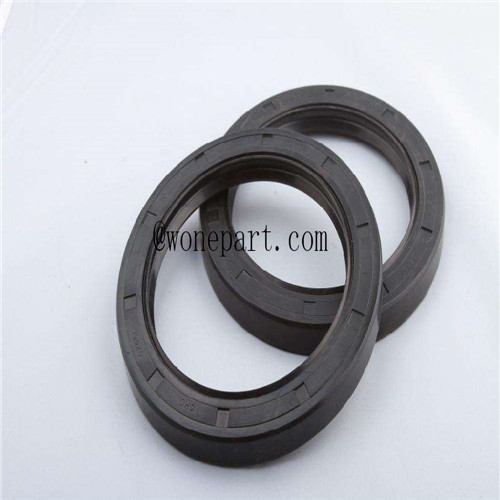
The oil seal is the seal of the lubricating oil. It isolates the parts that need to be lubricated in the transmission parts from the output parts, so that the lubricant will not leak.
All parts that have liquid lubricating oil in the running body box and are connected to the outside need oil seals. Some are rubber, some are metal, and most are steel-bonded rubber, such as the crankshaft rear oil seal, the front and rear oil seals of the gearbox, the left and right half shaft oil seals, the front oil seal of the final drive, and the air compressor crankshaft oil seal.
Fully sealed
Fully enclosed seal is to completely isolate the leakage channels inside and outside the system, or to place the working machine (pump) and the prime mover in the same closed system, which can completely prevent the medium from leaking out. Therefore, when it involves highly toxic, radioactive materials and rare In the production of valuable materials, as well as in precision experiments, hermetic sealing is of great significance. The common form is diaphragm seal.
4 Non-contact dynamic seal
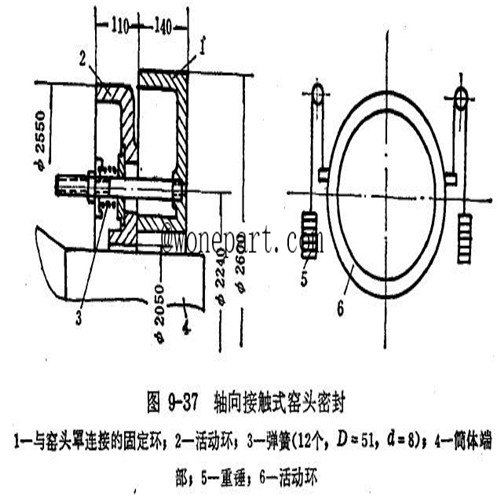
Floating oil seal
Floating ring seal is a high-speed seal that can be used to seal gas and liquid. When sealing gas, the floating ring device should be filled with lubricating oil to facilitate sealing and lubrication. Floating ring seal is also called oil film seal.
A non-contact dynamic seal that limits fluid leakage by the very small gap between the floating metal ring and the shaft or housing. The floating ring can float freely in the shell, so the impact on the seal is small when the shaft rotates at high speed and vibration occurs, and the friction and wear are also small.
Screw seal
Spiral seal is a form of dynamic seal. It is a spiral groove that is machined on a rotating shaft or a shaft containing sleeve, and a sealing medium is filled between the shaft and the sleeve.
The rotation of the shaft causes the spiral groove to produce a conveying effect similar to that of a pump, thereby preventing leakage of the sealing liquid. The size of its sealing ability is related to the helix angle, pitch, tooth width, tooth height, the effective length of the tooth and the gap between the shaft and the sleeve.
Since there is no friction between the seals, the service life is long, but due to the limitation of structural space, the spiral length is generally short, so its sealing ability is also limited. When the pump is used at reduced speed, its sealing effect will be greatly reduced.
Centrifugal seal
The centrifugal seal is a device that uses the centrifugal force generated when the added work element rotates to prevent leakage. The sealing ability comes from the work done by the sealing element driven by the rotation of the machine shaft. There are two main forms of centrifugal seal: back blade seal and auxiliary impeller seal.
Back blade seal and auxiliary impeller seal are commonly used shaft seal devices for centrifugal pumps. These two types of centrifugal seals can use a large sealing gap, have low wear, have a long life, and can achieve close to zero leakage. They are often used to transport impurity pumps and slurry pumps containing solid-phase media, but the sealing power consumption is large and needs to be configured. Parking seal.
Labyrinth seal
The labyrinth seal is to set a number of circular sealing teeth arranged in sequence around the rotating shaft. A series of interception gaps and expansion cavities are formed between the teeth and the teeth. The sealed medium produces a throttling effect when passing through the gap of the tortuous labyrinth to achieve leakage prevention. purpose.
It has the advantages of good sealing performance under high-speed conditions, no lubrication, no friction, simple maintenance, long service life, and no need to use other sealing materials; but it has high processing accuracy and is difficult to assemble.
Magnetic fluid seal
Magnetic fluid sealing technology is developed on the basis of magnetic fluid. When the magnetic fluid is injected into the gap of the magnetic field, it can fill the entire gap to form a "liquid O-ring seal."
The function of the magnetic fluid sealing device is to transfer the rotating motion to the sealed container, and it is often used for vacuum sealing.
Face seal (mechanical seal)
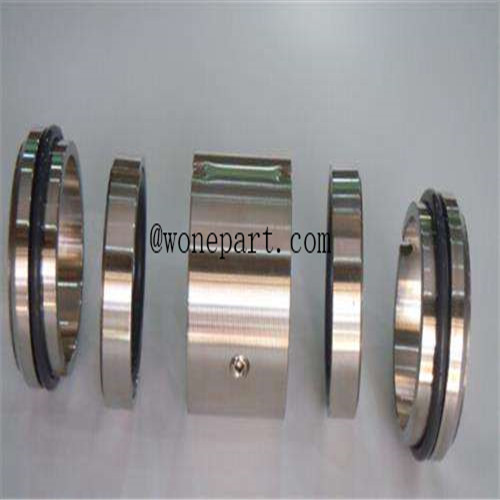
"End face seal" means that the seal is on the end face and is sealed by another plane.
A mechanical seal refers to a device that prevents fluid leakage by keeping at least a pair of end faces perpendicular to the axis of rotation under the action of fluid pressure and the elastic force (or magnetic force) of the compensation mechanism and the cooperation of the auxiliary seal to prevent fluid leakage. Elastic loading mechanism and auxiliary seal are mechanical seals of metallic corrugated tubes, which we call metal bellows seals. In light-duty seals, rubber bellows are also used as auxiliary seals. Rubber bellows have limited elasticity and generally need to be supplemented with springs to meet the loading elasticity. "Mechanical seal" is often referred to as "mechanical seal".

